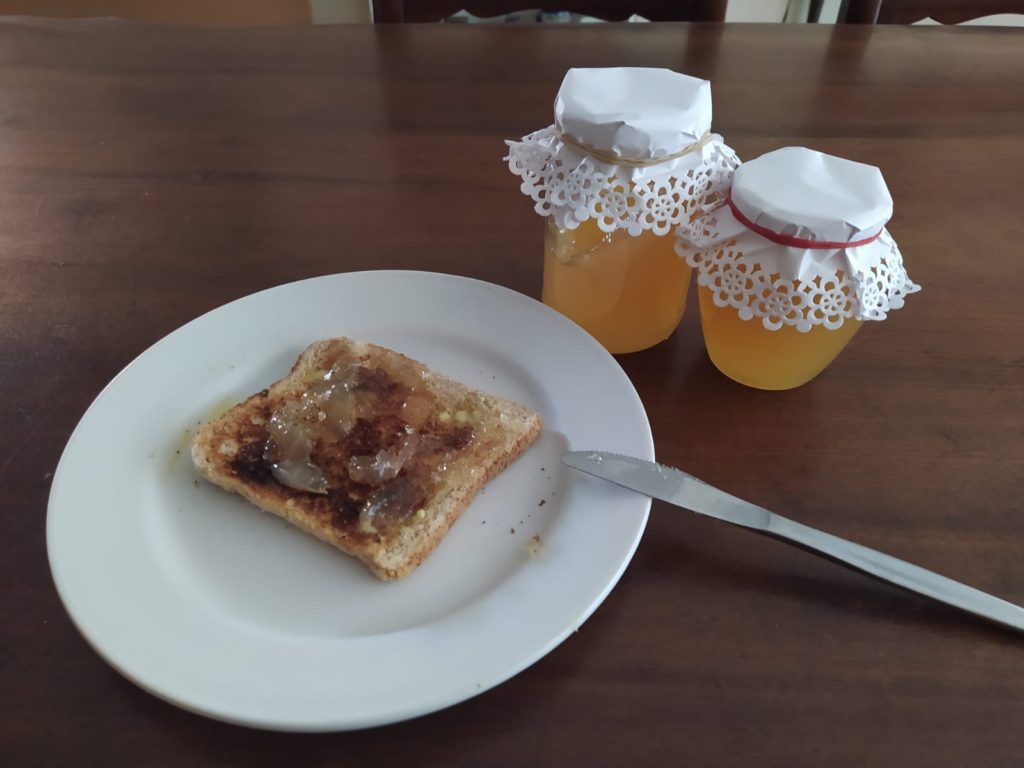Lemon jelly/jam: A good way to use up your lemon harvest this winter.
Chop up 12 lemons and take out the pips. (These can be kept for when the next batch of jam is made.)
Soak overnight in a bowl of water.
Boil up for 1.5-2 hours.
Sieve through muslin.
Add 500g sugar to every 625ml juice.
Simmer gently. Test whether jelly has formed by pouring a small amount on a cold plate (ceramic, not tin). Leave it for a short while. If it sets, the jelly is ready.
Pour into sterilised jars while still hot and seal. (See below for how to sterilise jars)
Lemon jelly can be used as a spread like marmalade or as a condiment.
Lemons can also be preserved in salt and lemon juice or in salt, rosemary, chili, lemon juice and olive oil.
Some people freeze lemons: place the whole fruits in a freezer bag and stash them in the freezer. When you need fresh lemon juice, simply defrost the frozen lemons in the microwave for a few seconds or submerge in cold water for about 15 minutes. One can also pickle lemons.
Smallholders can of course make lemonade, puddings, cakes and tarts. Lemon marmalade and lemon curd are old-fashioned favourites.

To sterilise jars
Wash the bottles and lids thoroughly to ensure there is absolutely no residual smell of their contents. To sterilise them pour about 3cm of water into each jar and microwave it on full power for five minutes. Slosh the boiling water about the jar and discard, and dry the jar by placing it upside down in a warm oven. Don’t dry it with a cloth – this will merely re-contaminate it.
The lids, even the new single-use ones, should be boiled to ensure sterility.


